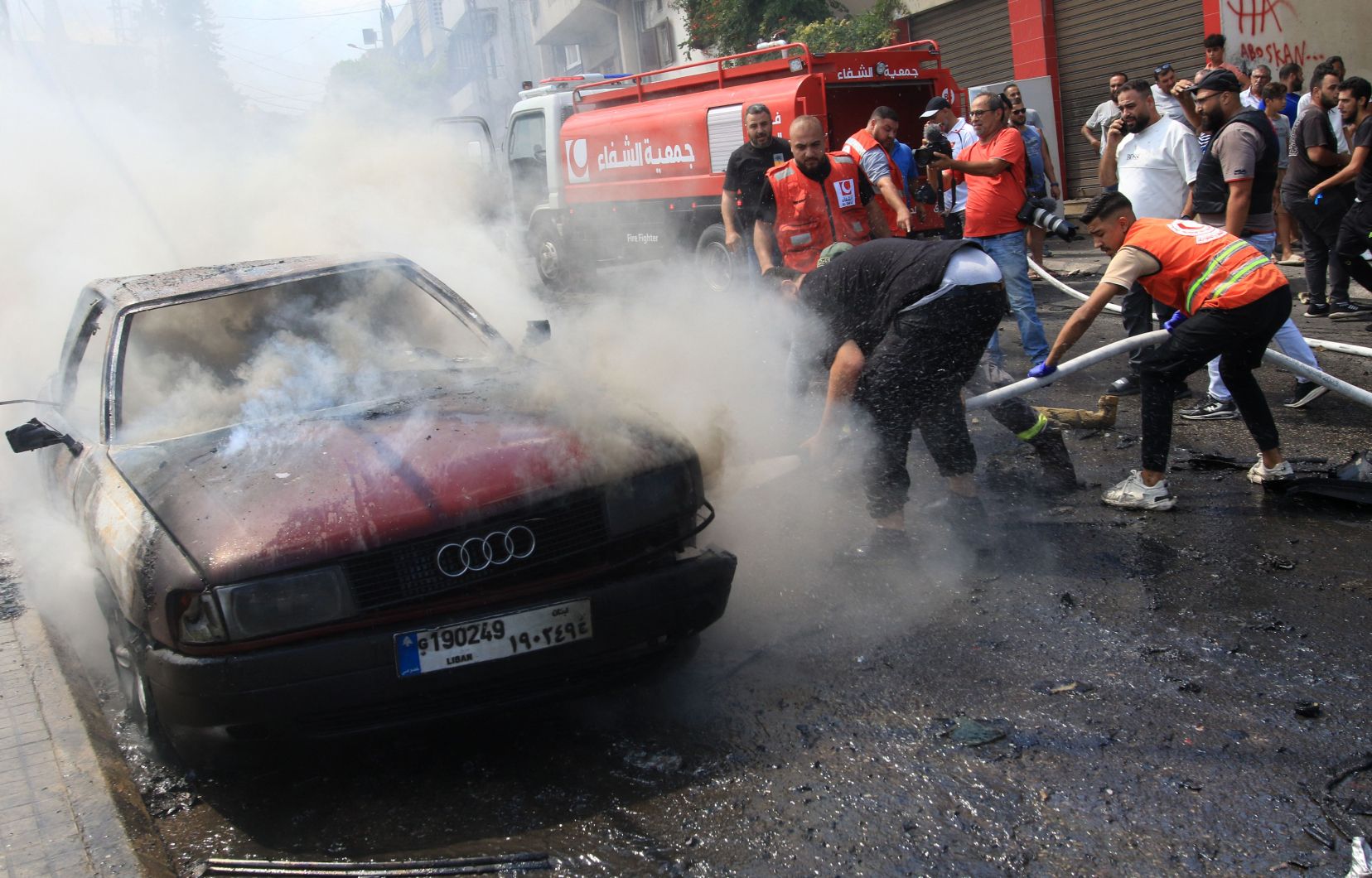Israel has stepped up its strikes in neighboring Lebanon, killing a Palestinian Fatah military leader on Wednesday for the first time since the start of the war in Gaza, where nearly 30 Palestinians have died in Israeli bombings according to the Civil Defense.
President Mahmoud Abbas’ Fatah has accused Israel of wanting to “set the region ablaze” with the “assassination” of Khalil Al-Maqdah, at a time when Secretary of State Antony Blinken has completed a new tour of the Middle East, without any breakthrough announced for a truce agreement in Gaza.
Hours after leaving office, US President Joe Biden spoke with Israeli Prime Minister Benjamin Netanyahu about efforts to broker a ceasefire and “de-escalate tensions in the region,” according to the White House.
Triggered by an unprecedented attack by the Palestinian Islamist movement Hamas against Israel on October 7, this war has left tens of thousands dead in the Palestinian territory, where around 2.4 million inhabitants are besieged.
An ally of Hamas, Hezbollah in Lebanon opened a front against Israel on October 8 on the border between the two countries, which has since been the scene of a spiral of violence between the pro-Iranian movement and the Israeli army.
In the past 24 hours, the army has carried out several raids in Lebanon, killing six people, according to Lebanese authorities, including Khalil Al-Maqdah, a leader of the armed wing of Fatah, in a strike against his car in Saida (south).
The military accused him of “acting on behalf” of Iran, Israel’s sworn enemy, and of involvement in “terrorist attacks.”
Hamas, an ally of Iran, and Fatah have been rivals for decades: the Islamists seized power in Gaza in 2007 and Fatah is based in the West Bank, a Palestinian territory occupied by Israel since 1967.
“Any scenario”
Hezbollah said it carried out around ten attacks on Wednesday against military positions in northern Israel and the Israeli-occupied Golan Heights using rockets and explosive drones.
“We are prepared to face any scenario, both defensively and offensively,” Netanyahu said during a visit to a base in northern Israel.
It was against this explosive backdrop that Mr. Blinken ended a new regional tour, warning that the latest American compromise proposal for a truce in Gaza could be the “last chance.”
The Secretary of State, who visited Israel, Egypt and Qatar, said that Israel had accepted the plan, the details of which have not been made public, and asked Hamas to do the same.
The Islamist movement accused the United States of including “new conditions” for Israel in the plan, including keeping Israeli troops on the Gaza-Egypt border.
Israeli media also claimed that Mr Netanyahu wanted to retain control of the border, but Mr Blinken stressed his country’s opposition to a “long-term Israeli occupation of Gaza”.
“In what world”
Hamas is demanding the implementation of a plan announced on May 31 by Joe Biden, which it had accepted in early July. It first provides for a six-week truce accompanied by an Israeli withdrawal from densely populated areas of Gaza and the release of hostages kidnapped on October 7, then, in a second phase, a total Israeli withdrawal from the besieged territory.
Further talks are expected in Egypt this week between Israel and the American, Qatari and Egyptian mediators.
Benjamin Netanyahu has often said he wants to continue the war until the destruction of Hamas, considered a terrorist organization by Israel, the United States and the European Union.
For the United States, a ceasefire in Gaza would also help prevent a flare-up in the Middle East, after threats by Iran and its allies to retaliate for the assassination, attributed to Israel, of Hamas leader Ismail Haniyeh on July 31 in Tehran.
The attack by Hamas commandos infiltrated from Gaza into southern Israel resulted in the deaths of 1,199 people, mostly civilians, according to an AFP tally based on official Israeli data. Of the 251 people kidnapped that day, 105 are still being held in Gaza, including 34 declared dead by the army.
In a kibbutz in southern Israel, relatives buried one of the six dead hostages recovered by the army in the Gaza Strip.
“In what world do families have to beg, scream and cry for the return of their loved ones, alive or dead? Bring them all back,” said his mother, Esther Buchshtab.
“On our heads”
In response to the Hamas attack, Israel launched a devastating offensive in Gaza that has killed at least 40,223 people, according to the Hamas government’s health ministry, which does not provide details on the number of civilians and fighters killed. But the UN says most of the dead are women and minors.
On Wednesday, at least 27 Gazans died in Israeli bombings, including three in a strike on a school sheltering displaced people in Gaza City (north), according to the Civil Defense. The army accused Hamas of hiding a base in the school.
“Is there an ounce of humanity left? [dans cette guerre] ” asked Philippe Lazzarini, head of UNRWA, the UN agency responsible for Palestinian refugees.
According to the UN, the multiple Israeli evacuation orders are pushing the inhabitants of the Palestinian territory, which is in the grip of a humanitarian disaster, “into overcrowded and dangerous areas.”
“Where are people supposed to go? They [Israël, ndlr] “They are hitting everywhere. There is no resistance here, the bombs are falling on people’s heads,” says Umm Mina Abu Mughassib, who has already been displaced five times, in Deir al-Balah (centre).
